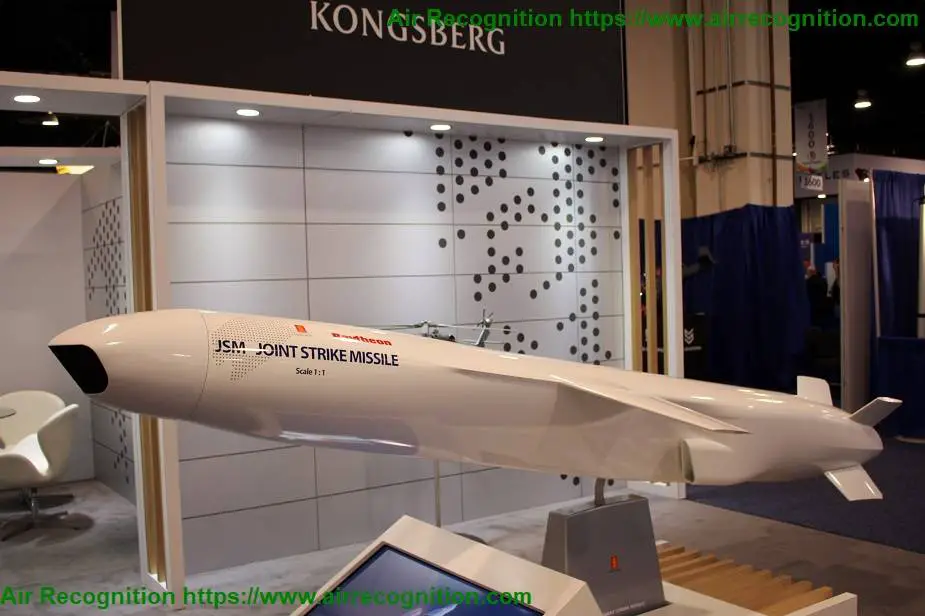Breaking news
Second contract for Kongsberg to provide Joint Strike Missile for Japanese F-35 fighter aircraft.
According to a press release published on December 1, 2020, Kongsberg Defence & Aerospace AS (KONGSBERG) has entered into a second follow-on contract with Japan to supply the JSM (Joint Strike Missile) for their fleet of F-35 fighter aircraft.
Follow Navy Recognition on Google News at this link
 A scale model of the JSM Joint Strike Missile. (Picture source: Air Recognition)
A scale model of the JSM Joint Strike Missile. (Picture source: Air Recognition)
The JSM (Joint Strike Missile) is a 5th generation stealth air-to-surface missile developed to fill F-35A anti-surface warfare (ASuW) and land-attack capability gaps. JSM can be carried internally in the F-35 thus ensuring the aircraft’s low-signature capabilities. The JSM has superior performance against well-defended sea- and land targets across long distances.
“The international F-35 user community is continuing to show great interest in the JSM and KONGSBERG is very proud to have been selected by Japan to provide the JSM for their F-35 fleet. “Our relationship is growing even stronger with this second follow-on contract”, says Eirik Lie, President, Kongsberg Defence & Aerospace AS.
In July 2020, the U.S. State Department has approved a contract for the sale of 105 Lockheed Martin F-35 fifth-generation fighter jets to Japan, under a contract estimated at over $23 billion in value. The contract will reportedly include 63 F-35A and 42 F-35B fighters and 110 Pratt and Whitney F135 engines - the most powerful engine used by any fighter jet in the world.
The JSM is a multi-role air-launched version of the NSM (Naval Strike Missile), and anti-ship and land-attack missile developed by the Norwegian company Kongsberg Defence & Aerospace (KDA).
The Joint Strike Missile (JSM) will feature an option for ground strikes and a two-way communications line so that the missile can communicate with the central control room or other missiles in the air. This missile will be integrated with the Lockheed Martin F-35 Lightning II. Studies have shown that the F-35 would be able to carry two of these in its internal bays, while additional missiles could be carried externally.



























